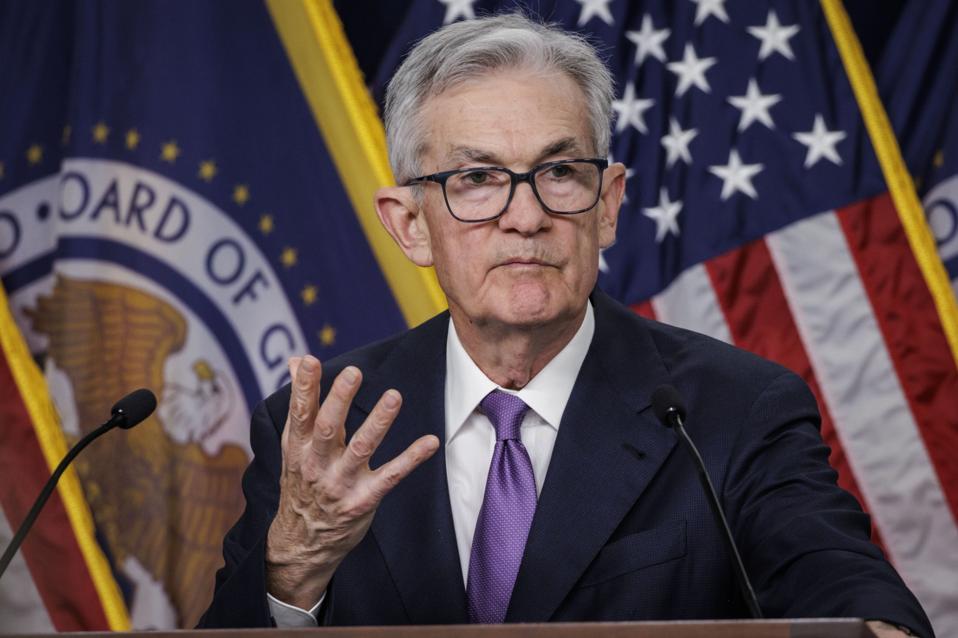The Consumer Price Index report for December 2023, will be released at 8.30 a.m. ET on January 11, 2024 by the U.S. Bureau of Labor Statistics. Federal Reserve officials are becoming more confident that the inflation outlook is benign, but the next set of CPI figures will help inform that view. Currently, Fed policymakers broadly expect to cut interest rates in 2024, but the timing and magnitude of any move is, in part, dependent on inflation’s trajectory.
CPI Expectations
According to nowcast data from the Cleveland Fed, inflation as measured by headline CPI is estimated to rise 0.3% month-on-month for December. A similar monthly increase of 0.33% is expected for core CPI (core CPI removes changes in food and energy prices). If this forecast holds, it would represent an increase from October and November readings, but still maintain the broader picture of cooling inflation over recent months.
Nonetheless, 0.3% monthly inflation would still imply an annualized inflation rate of over 4%, compared to the Fed’s 2% annual target, so though the Fed won’t read too much into a single CPI report, such a relatively high December CPI reading might incrementally delay the prospect of anticipated interest rate cuts in 2024, especially when the market sees a March cut as likely.
The Fed’s Perspective
Recently disclosed Fed minutes from the Fed’s December monetary policy meeting make clear that the Fed is becoming comfortable that inflation is under control and that interest rates may already be at peak levels for this cycle.
However, the Fed will be attentive to services prices as a sub-category within the data. Overall, U.S. inflation trends have been favorable over recent months, but services prices have not cooled as much as the Fed would like. If services prices were to unexpectedly spike over the coming months that may be a concern for the Fed and potentially lead to incremental shifts in monetary policy.
The Fed will also be watching trends for shelter costs. Shelter costs are expected to fall further, but remained one of the areas of relatively faster rising price for much of 2023. Since shelter costs carry a large weight in the CPI disinflation there could do a lot to help inflation move lower. Recent reports have hinted this trend could be starting to play out.
Lastly, though it can’t be inferred from the CPI report directly, the Fed will be assessing how comfortable they are that inflation is on track to return to the Fed’s 2% annual target. This is more of a judgement call on the broader economy than something that can be gleaned directly from the CPI report.
There is some concern that inflation may plateau at a level above 2%, or even move up again, though again, in recent months Fed decision-makers have become a little more optimistic regarding how inflation is trending.
Monetary Policy For 2024
Fed officials and markets are broadly on the same page that interest rates will decline in 2024. The Fed is moving away from language that implies another interest rate hike. Officials are increasingly stating that rates may already be at peak levels for this cycle.
However, the markets see a better than even chance of an interest rate cut as soon as March according to the CME FedWatch Tool. It’s not clear the Fed agrees. December’s CPI report would be the first of three CPI reports that the Fed will receive before that meeting, which occurs on March 19-20. Of course, the Fed’s monetary policy committee will meet on January 30-31 too, but no movement in rates is currently expected that that meeting.
Of course, the Fed will be watching many other indicators too beyond inflation, not least the jobs market. Still, the Fed will want to see cooling inflation continuing across the majority of upcoming CPI readings if they are to cut rates in March as the market suspects. If not, then the Fed may be tempted to hold rates steady a little longer than fixed income markets currently anticipate, notwithstanding the fact that rates are already set at relatively restrictive levels. That level of restrictiveness means that Fed may be tempted to bring rates a little lower to avoid an inadvertent recession.
However, unlike recent years, as inflation cools, the Fed may spend a little less time focused squarely on inflation and more time assessing the prospects for employment, which is the other half of the Fed’s core mandate.

